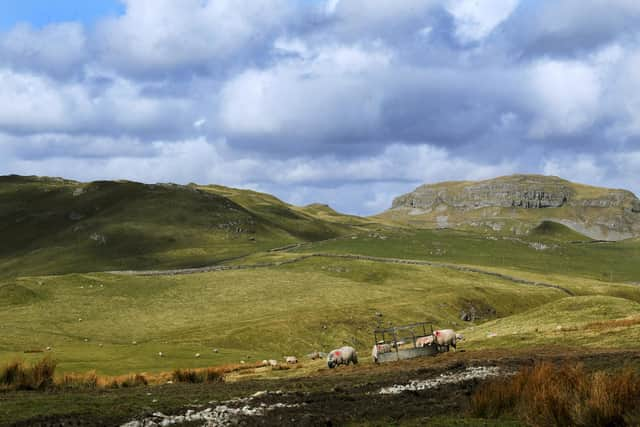Yorkshire Dales: Managing tourists heading to the National Park is our 'biggest challenge' says chairman
Yorkshire Dales National Park Authority chairman Neil Heseltine was speaking as it emerged the 2,179sq km area has seen a surge of motorists heading into the park, with more than £300,000 extra income from its car parks last year.
A meeting of the authority heard the unprecedented car parking income had helped contribute to a £1.1m underspend, meaning its most ambitious programme of works in its 68-year history could be extended further.
Advertisement
Hide AdAdvertisement
Hide AdThe £12m programme for the coming year includes directly supporting high nature value farming by providing £1.3m in grants through the national Farming in Protected Landscapes programme; and running an extended Catchment Sensitive Farming programme to reduce water pollution.


Other key projects for the year include progressing large-scale schemes to enhance wildlife and working towards a new Local Plan for the park, including identifying new housing sites and producing a new statement on under-occupied properties.
The authority’s main aims for the year are set to see a range of measures to broaden the opportunities for people to access the park for health, including making more rights of way suitable for all users, and running a range of inspirational events.
An extensive programme of works to rights of way to maintain and improve the opportunities for physical access within the park will see replacement signage, new surfacing, and continuing efforts to put right flood damage to foot bridges in Swaledale.
Advertisement
Hide AdAdvertisement
Hide AdMembers told the meeting the rise in income from car parking was a “good news story” for the park, however the meeting also heard the authority was continue to grapple with its ambition to lead the way in cutting carbon emissions.
The meeting heard the authority had found a large portion of the emissions it was responsible for related to its dedicated army of volunteers driving to and around the park to carry out tasks such as conservation.
After the meeting, Mr Heseltine said the authority was mindful of finding a balance between its conflicting ambitions of attracting visitors and being an exemplar on cutting emissions and conserving the environment.
He said he believed the development of public transport would need to play a part in achieving the goals, although how this would be achieved remains unclear.
Advertisement
Hide AdAdvertisement
Hide AdMr Heseltine said: “I think the biggest challenge for us going forward is the sustainability of tourism. How do we encourage more and a greater diversity of visitors to come and how we manage that with regards to carbon, with the conflicts potentially with nature, farming and land managment?”

